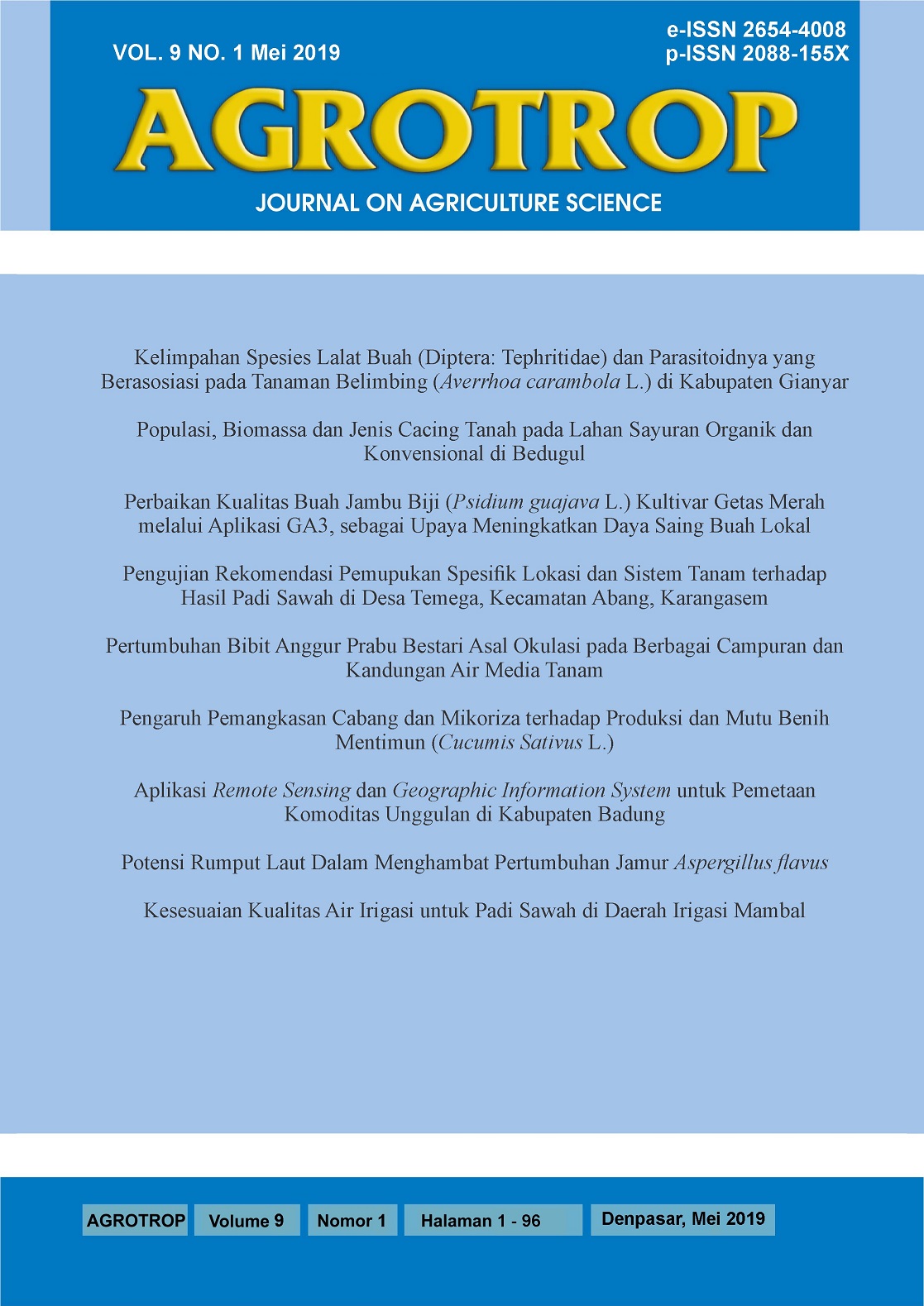Potensi Rumput Laut Dalam Menghambat Pertumbuhan Jamur Aspergillus flavus
Abstract
Potential of Seaweed in the Inhibition of Fungi Growth Aspergillus flavus. This use of synthetic chemicals as a controller of fungal growth in foodstuffs can have adverse effects on health, so it needs natural control ingredients that do not have an impact on human health. Various types of fungi such as Aspergillus flavus attack a lot of food items after harvest, these fungi can produce aflatoxin which is very toxic to consumers. Aflatoxin cannot be neutralized through cooking so efforts to avoid fungal contamination need to be done. One of the natural fungi controllers is by utilizing natural resources, including seaweed. Development of seaweed as an antifungal is an alternative that needs to be realized. For this reason, it is necessary to examine the potential inhibitory of seaweed A. flavus development. This study examined six types of seaweed like Gracilaria verrucosa, Euchema spinosum, Ulva lactuca, Ulva reticulata, Euchema edule, and Padina sp. The results showed that Padina sp. seaweed has a very strong potential inhibitory compared to other types of seaweed.
Downloads
References
Chalyyn, Pakidi dan Hidayat. 2017. Potensi dan Pemanfaatan Bahan aktif Alga Coklatsargassum sp. Octopus Jurnal Ilmu Perikanan. Vol 6 No 1
Cox,S.,Ghanam,N., Gupta,S. 2010. An assesment of the Antioxidant and Antimicrobial activity of six species of Edible Irish Seaweeds. International Food Research Journal 17: 205-220
Eahamban,K and J. Marimuthu. 2012. Preliminary Phytochemicals, UV-VIS HPLC and Antibacterial Studies on Gracilaria corticata. Asian Pasific Journal of Tropical Biomedicine. 5540-5574
Hutasoit, H., I.K.Suada.,I.G.K Susrama. 2013. Uji Aktivitas Antijamur Ekstrak Beberapa Jenis Biota Laut terhadap Aspergillus flavus LINK dan Penicilliumsp.LINK. E-Jurnal Agroekoteknologi Tropika ISSN:2301-6515 Vol. 2,No.1.
Maryam, R. 2006. Pengendalian terpadu kontaminasi mitotoksin. Balai Penelitian Veteriner. 16 (1):21-30. http://bbalitvet.litbang.pertanian.go.id. Akses 04 November 2015.
Siregar, A.F., S. Agus dan P. Delianis. 2012a. Potensi Antijamur dan Antibakteri Ekstrak Rumput Laut terhadap Jamur A. flavus dan Bakteri Pseudomonas aeruginosa. http://ejournal-s1.undip.ac.id/index.php/jmr. Akses 11 April 2016.
Siregar, A.F., S. Agus dan P. Delianis. 2012b. Potensi Anti Bakteri Ekstrak Rumput Laut Terhadap Bakteri Penyakit Kulit Pseudomonas aeruginosa, Staphylococcus epidermides, dan Micrococcus luteus. Journal of Marine Research . Volume 1 No 2. Hal 152-160
Tosiyah, K.S.M Julyasih, dan A.Purnawati. 2016. Kemampuan Ekstrak Rumput Laut Bulung Boni (Caulerpa sp.) dalam Menghambat Pertumbuhan Aspergillus Flavus pada Biji Jagung. Jurnal Plumula. Volume 5 No 2. Hal 168-178











